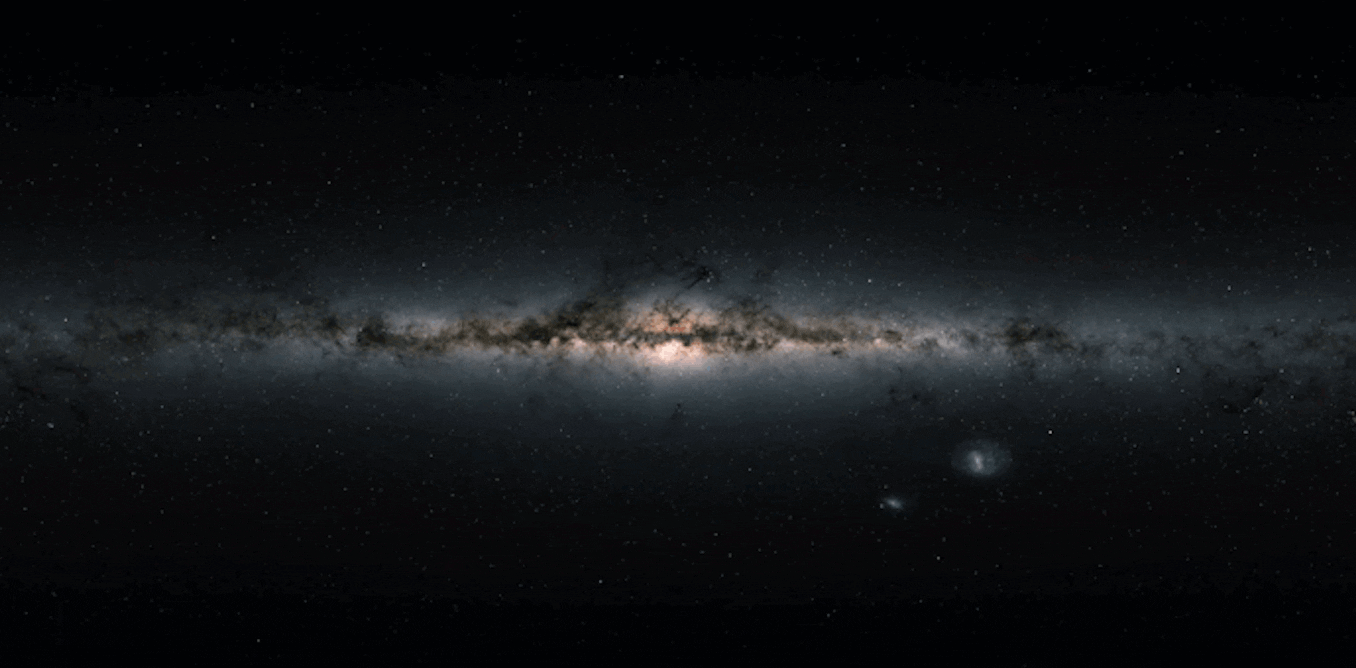Science
How the Discovery of Exoplanets Transformed Our Cosmic Perspective

The field of astronomy underwent a revolutionary transformation on October 6, 1995, when Swiss astronomers Michel Mayor and Didier Queloz announced the discovery of a planet orbiting a star outside our solar system. This groundbreaking finding, made at a scientific meeting in Florence, Italy, involved the star 51 Pegasi, located approximately 50 light years away in the constellation Pegasus. The planet, named 51 Pegasi b, was unlike any celestial body previously documented, marking the beginning of a new era in our understanding of planetary systems.
The discovery was facilitated by the Elodie spectrograph, installed at the Haute-Provence Observatory in southern France. By splitting starlight into its component colors, this instrument revealed a unique “stellar barcode” that indicated the presence of a planet. Mayor and Queloz observed the spectrum of 51 Pegasi shifting rhythmically every 4.23 days, a clear signal that the star was being influenced by the gravitational pull of an unseen companion. Despite initial skepticism, their findings were confirmed within weeks by other research teams.
The implications of this discovery were profound. 51 Pegasi b, a gas giant with a mass at least half that of Jupiter, orbits its star at a distance twenty times closer than Earth to the Sun, resulting in extreme temperatures exceeding 1,000°C. This led to the classification of such planets as “hot Jupiters,” a term that would become commonplace as more exoplanets were discovered.
Expanding Our Understanding of Exoplanets
Since that historic announcement, astronomers have identified over 6,000 exoplanets and candidates, highlighting a staggering diversity among these worlds. Some exoplanets, like ultra-hot Jupiters, exhibit day-side temperatures surpassing 2,000 °C, while others, such as Tatooine-like planets orbiting dual stars, challenge previous notions of planetary systems. The discovery of 51 Pegasi b has opened the floodgates for further exploration and understanding of planets beyond our own solar system.
The quest for Earth-like planets continues to drive modern astronomical research. As scientists search for a twin to our planet, they utilize advanced instruments such as the Harps-N spectrograph, located on the Italian-built Telescopio Nazionale de Galileo on the Canary Island of La Palma. This state-of-the-art tool allows researchers to measure the minuscule gravitational influences that planets exert on their host stars, providing invaluable data about their masses and compositions.
Before the mid-1990s, our knowledge of planetary systems was limited to the eight planets of our solar system. Theories about planetary formation were largely based on these celestial bodies, leading to a narrow understanding of the universe. Ancient philosophers like Epicurus and Aristotle debated the existence of other worlds, but it wasn’t until the 20th century that scientific consensus began to shift dramatically.
The Evolution of Exoplanet Discovery Techniques
In the 1940s, the scientific community began to reconsider the rarity of planets following claims of potential planets orbiting stars such as 70 Ophiuchus and 61 Cygni. Although these claims would later be disproven, they sparked a significant change in thinking. By the 1970s and 1980s, astronomers recognized that planets are likely to form as a natural byproduct of star formation, vastly increasing the estimated number of planets in the universe.
In 2001, astronomers utilized the transit method to detect exoplanets, a technique that measures the dimming of a star as a planet passes in front of it. This method gained prominence after the discovery of HD209458b by David Charbonneau, which solidified the transit technique as a primary method for exoplanet detection. This approach has since led to the identification of four times as many exoplanets as the radial velocity technique initially employed by Mayor and Queloz.
Despite the advancements in detection methods, the search for an Earth-like planet continues to be a challenging endeavor. Currently, astronomers are striving to locate a planet with a mass and radius similar to that of Earth, orbiting a Sun-like star at a distance conducive to supporting life. The ongoing efforts, led by dedicated teams such as the one behind the Harps-N spectrograph, are focused on expanding our understanding of planetary systems and potentially uncovering the first true Earth twin.
The quest for knowledge about the cosmos remains a tantalizing journey, with scientists around the world dedicated to exploring the vast expanse of the universe. As we look to the future, the hope of discovering another Earth invigorates the field of astronomy, inviting us to ponder the possibilities of life beyond our planet.
-

 World2 days ago
World2 days agoCoronation Street’s Shocking Murder Twist Reveals Family Secrets
-

 Entertainment4 months ago
Entertainment4 months agoKate Garraway Sells £2 Million Home Amid Financial Struggles
-

 Entertainment3 months ago
Entertainment3 months agoAnn Ming Reflects on ITV’s ‘I Fought the Law’ Drama
-

 Health3 months ago
Health3 months agoKatie Price Faces New Health Concerns After Cancer Symptoms Resurface
-

 Entertainment3 weeks ago
Entertainment3 weeks agoCoronation Street Fans React as Todd Faces Heartbreaking Choice
-

 World3 weeks ago
World3 weeks agoBailey Announces Heartbreaking Split from Rebecca After Reunion
-

 Entertainment5 days ago
Entertainment5 days agoTwo Stars Evicted from I’m A Celebrity Just Days Before Finale
-

 World5 days ago
World5 days agoKevin Sinfield Exceeds Fundraising Goal Ahead of Final Marathons
-

 Entertainment3 months ago
Entertainment3 months agoCoronation Street’s Carl Webster Faces Trouble with New Affairs
-

 Entertainment3 months ago
Entertainment3 months agoWhere is Tinder Swindler Simon Leviev? Latest Updates Revealed
-

 Entertainment4 months ago
Entertainment4 months agoMarkiplier Addresses AI Controversy During Livestream Response
-

 Science2 months ago
Science2 months agoBrian Cox Addresses Claims of Alien Probe in 3I/ATLAS Discovery





















